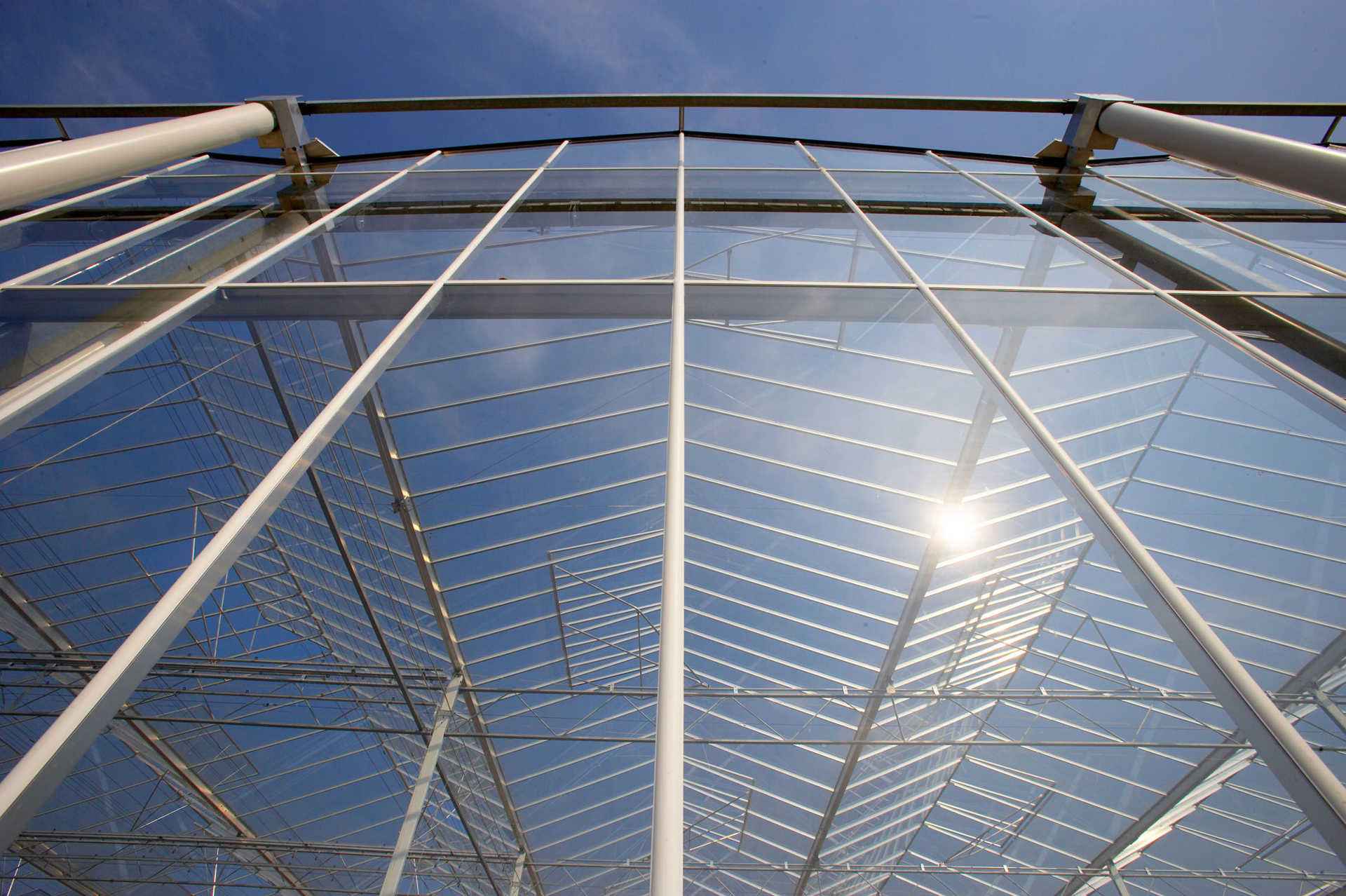Mechanical Cooling (HVAC)

Short definition
In greenhouse contexts, Mechanical Cooling denotes active refrigeration-based or absorption-based systems used to remove sensible and latent heat from greenhouse air or transfer cold via soil or water for root-zone cooling.
Expanded definition
=Mechanical cooling uses active systems such as vapor-compression chillers, absorption units, or heat-pump cycles to remove heat from greenhouse air or to deliver cold water to the root zone. These systems provide both sensible cooling and dehumidification, enabling closed- or semi-closed operation when outdoor conditions or evaporative cooling cannot meet targets. Sizing and control depend on climate, crop type, and building design, requiring monitoring of dry-bulb and wet-bulb temperatures, humidity, and enthalpy to avoid condensation or plant stress. They are typically integrated with ventilation, shading, and automation to balance energy use with crop quality. They must be matched to envelope design and AHU configurations so latent loads are managed without overcooling. Synonyms and abbreviations: mechanical cooling, absorption cooling, air conditioning, HVAC cooling, vapor-compression cooling, heat-pump cooling, air handling unit (AHU) dehumidification, mechanical dehumidification, chilled-water cooling, soil cooling (via chilled water).
In Greenhouse Context
Mechanical cooling represents a strategic option when climates or crop requirements demand precision humidity control and temperature management beyond what ventilation and adiabatic cooling can provide. By recirculating air through cooling coils or by circulating chilled water to the root zone, these systems create a reliable latent and sensible load removal pathway, enabling more consistent conditions for sensitive crops and propagation stages. Capital and operating costs are significant, so many operations pair mechanical cooling with energy recovery, heat pumps, and seasonally adjusted operation to avoid oversizing. The approach relies on robust sensors and controls: dry-bulb and wet-bulb temperature, humidity ratio, enthalpy, and CO2 levels; automation coordinates fans, pumps, and chiller cycles to maintain target setpoints while minimizing energy use. In practice, envelope design, AHU configuration, and screening affect latent loads, ventilation needs, and the required cooling capacity; engineers dimension systems to accommodate peak loads while preserving crop safety and operator comfort.
Examples and/or use cases
Freesia propagation in a soil-cooled bed uses buried tubing connected to a chiller to maintain cool, uniform root-zone temperatures; a high-value cut-flower greenhouse in a subtropical climate relies on an AHU with a chilled-water coil to dehumidify the air while recirculating most air and enabling CO2 enrichment with vents closed; a research propagation facility implements night-time dehumidification with a heat-pump assisted cooling cycle to remove residual moisture when transpiration is low; ornamentals in a humid environment employ mechanical cooling in combination with shading and selective ventilation to prevent condensation on glass; a soil-cooling pilot in a freesia trial circulates chilled water through subterranean tubes to sustain root-zone temperatures during heat waves.
Relevance
In greenhouse practice, mechanical cooling is central to precise climate control, underpinning psychrometric assessment and the ability to set and run control algorithms that manage both temperature and humidity. The approach supports setpoint strategies, sensor networks, and autotuning of HVAC equipment, where understanding dry-bulb and wet-bulb conditions, humidity ratio, and enthalpy informs decisions on when to ventilate, when to rely on closed operation, and when to deploy thermal storage or heat pumps to improve COP. From a plant physiology perspective, maintaining stable leaf temperatures and appropriate leaf wetness supports photosynthesis efficiency and crop quality, especially for high-value crops where uniform conditions matter. The trade-offs focus on capital and energy costs versus gains in crop uniformity, yield quality, and feasibility of CO2 enrichment under restricted venting. Sources — Books: Greenhouse Climate Control — J.J.G. Breuer; P. Knies; Heating, Ventilating and Cooling Greenhouses — ASAE/University extension. Sources — Online: https://ceac.arizona.edu/sites/default/files/asae_-_heating_ventilating_and_cooling_greenhouses.pdf; https://extension.psu.edu/psychrometric-chart-use/; https://msu-prod.dotcmscloud.com/floriculture/uploads/files/Section%20_3.pdf; https://pdhonline.com/courses/m135/m135content.pdf.